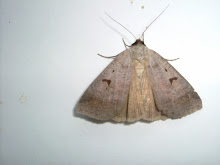Pallid /Montagu’s Harrier Circus
pygargus / macrourus?
Mount Tabour 14th September 2019
Wind
SW4, cloud-cover 3/8, temperature 6 ℃, visibility excellent
Distance
from bird between 100 m and 150m, apox 2 minute observation, through bins.
Circumstances
I was on my way to see
a Black Redstart that had been hanging around all week at Fly flats As I drove towards Mount Tabour at apox SE 05715 26793 , I noticed a group of Meadow
Pipits and Starlings mobbing a bird of prey , must be a Sparrowhawk I thought
as I have seen them hunting here many times. It looked more falcon like, I
pulled the car over and grabbed my bins. The bird was just over the road and still
being mobbed by the Pipits. It was a Harrier (ahhhh) slim and fast and flighty
.I immediately ruled out Hen Harrier as I see them on a regular basis and I
knew this was not a Hen too thin and agile. The Harrier flew low along the wall
at one point gliding over the wall and was lost to view , it then came back
into view and again over the wall and then
headed west it was being mobbed all the time and flushing Starlings that were
sat on the wall. I got a very good view
of the bird as it flew away, switching its head from side to side. It was not
an adult male unfortunately and looked like a Montagu’s/ Pallid Harrier juv /
female type. I sent a text to local grapevine saying small Harrier sp heading
s/w to see if it was picked up elsewhere
but this drew a blank.
Description
At first
glance(still driving)I had considered a falcon perhaps one of the local Peregrines that had been hanging
around or the local Sparrowhawk , but when I got my binns on the bird I could
see it was a Harrier , light bounding flight and as they say Tern like , it was
a Harrier but not Hen Harrier as I have watched them for many , many hours only
a few miles from this spot. It was not an adult male as they are easily to
recognise. It was a juvenile / female type , thin hand and pointed ,and thin
arm making wings look long , with dark
secondary ’s and dark trailing edge , long tail with slim white rump. The body
looked uniform and pale ocre with no vis- able streaks and there was no
strongly marked collar. ( Was it a late Monty’s or an early Pallid , I had ruled out Pallid as there was
no vis- able ‘Boa’ but this may not be the case in all individuals)
As the bird flew away
the striking thin tail with thin white rump stood out I could see a few black dots in the white ‘
rump ‘ the wing coverts were pale and scaly and looked
to have a golden sheen in the sun this contrasted with dark secondary’s and primary
‘s ( this view made me think Pallid). The head was turning from side to side
and no collar could be seen. I was now thinking it was a juv Montagu’s Harrier
but I had not been able to count the primary‘s as it flew across the wall and
when it flew away which I think would have clinched it. I am convinced it was a Pallid / Montagu’s Harrier
with 100% identification not possible with views obtained .
On the 1st
October 2019, I bumped into one of the local East Lacns birders who showed me the pictures of the Montagu’s
Harrier at nearby Pendle Hill a few days before and this could have been the
same bird , but in some photos it looked totally different . Although it was taken in bright sunshine
which highlighted the colours, it was a bright striking individual with very
distinct neck markings . !!
Experience…
Hen harrier …Since Nov 2017 I have had at least 200 sightings
of local Hen Harriers, hunting , roosting etc . I have also watched them at the
nest site, displaying, foodpass and courtship flights.
Local Montagu’s Harrier
2014 watched the female Montagues Harrier near Leeshaw
Reservoir display flight and hunting.
2000 watched first summer male at Langsett / Midhope area on
a couple of afternoons.
Pallid Harrier
Adult male Pallid Harrier at Dunsop Bridge watched collecting
nesting material, sky dancing and calling.
2015 Found a 2cy Pallid Harrier at Cornisholme Lincolnshire
2016 accepted by BBRC (BB110 p 572) Lincolnshire bird report 2015 page 63.
Also seen Montagu’s Harrier on Migration at Tarifa , Cyprus
and Lesvos . I have also seen Montagu’s Harriers in France breeding ground in 2014
and 2015 near holiday cottage.



















